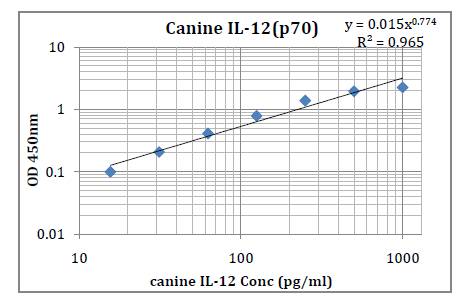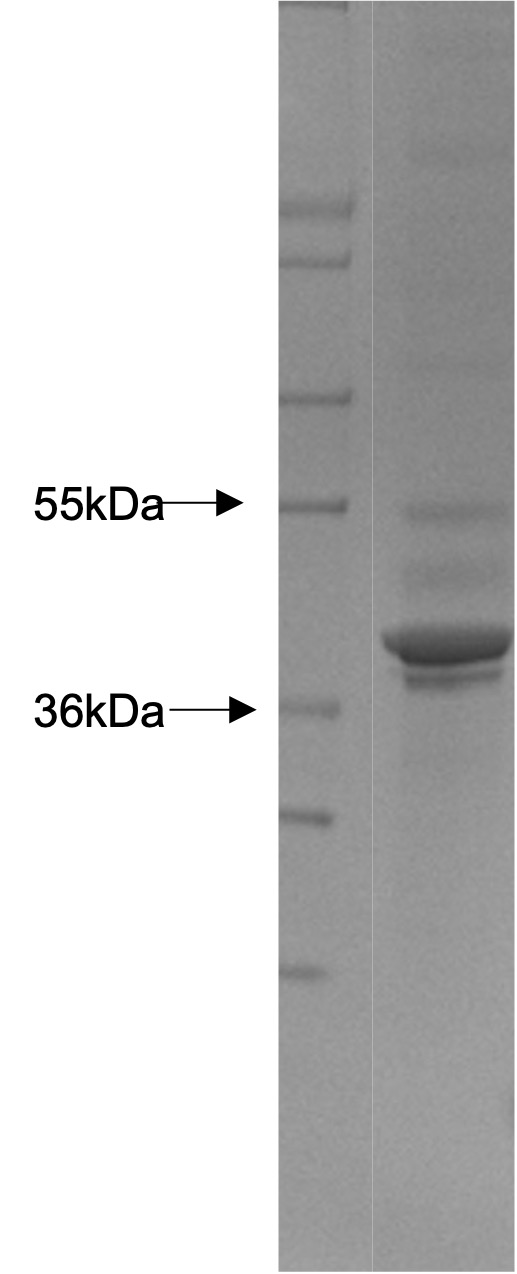Human SIRP alpha / CD172a Recombinant Protein (His Tag)(Discontinued)
Shipping Info:
For estimated delivery dates, please contact us at [email protected]
| Amount : | 100 µg |
| Purification : | > 98 % as determined by SDS-PAGE |
| Content : | Formulation Lyophilized from sterile PBS, pH 7.4 Normally 5 % - 8 % trehalose, mannitol and 0.01% Tween80 are added as protectants before lyophilization. |
| Storage condition : | Store it under sterile conditions at -20°C to -80°C. It is recommended that the protein be aliquoted for optimal storage. Avoid repeated freeze-thaw cycles. |
| AA sequence : | Met1-Arg370 |
| Alternative Name : | BIT Protein, CD172A Protein, MFR Protein, MYD-1 Protein, P84 Protein, PTPNS1 Protein, SHPS1 Protein, SIRP Protein, SIRP alpha Protein, |
Source : HEK293 Cells
Tyrosine-protein phosphatase non-receptor type substrate 1, also known as SHP substrate 1, Inhibitory receptor SHPS-1, Brain Ig-like molecule with tyrosine-based activation motifs, Macrophage fusion receptor, CD172 antigen-like family member A, SIRPA and CD172a, is a single-pass type I membrane protein which contains two Ig-like C1-type (immunoglobulin-like) domains and one Ig-like V-type (immunoglobulin-like) domain. SIRPA is ubiquitously expressed. It is highly expressed in brain and detected at lower levels in heart, placenta, lung, testis, ovary, colon, liver, small intestine, prostate, spleen, kidney, skeletal muscle and pancreas. It is also detected on myeloid cells, but not T-cells. SIRPA is an immunoglobulin-like cell surface receptor for CD47. SIRPA acts as docking protein and induces translocation of PTPN6, PTPN11 and other binding partners from the cytosol to the plasma membrane. SIRPA supports adhesion of cerebellar neurons, neurite outgrowth and glial cell attachment. It may play a key role in intracellular signaling during synaptogenesis and in synaptic function. SIRPA is involved in the negative regulation of receptor tyrosine kinase-coupled cellular responses induced by cell adhesion, growth factors or insulin. It mediates negative regulation of phagocytosis, mast cell activation and dendritic cell activation. Cancer Immunotherapy Co-inhibitory Immune Checkpoint Targets Immune Checkpoint Immune Checkpoint Detection: ELISA Antibodies Immune Checkpoint Detection: FCM Antibodies Immune Checkpoint Detection: IHC Antibodies Immune Checkpoint Detection: IP Antibodies Immune Checkpoint Detection: WB Antibodies Immune Checkpoint Targets Immunotherapy Targeted Therapy
Tyrosine-protein phosphatase non-receptor type substrate 1, also known as SHP substrate 1, Inhibitory receptor SHPS-1, Brain Ig-like molecule with tyrosine-based activation motifs, Macrophage fusion receptor, CD172 antigen-like family member A, SIRPA and CD172a, is a single-pass type I membrane protein which contains two Ig-like C1-type (immunoglobulin-like) domains and one Ig-like V-type (immunoglobulin-like) domain. SIRPA is ubiquitously expressed. It is highly expressed in brain and detected at lower levels in heart, placenta, lung, testis, ovary, colon, liver, small intestine, prostate, spleen, kidney, skeletal muscle and pancreas. It is also detected on myeloid cells, but not T-cells. SIRPA is an immunoglobulin-like cell surface receptor for CD47. SIRPA acts as docking protein and induces translocation of PTPN6, PTPN11 and other binding partners from the cytosol to the plasma membrane. SIRPA supports adhesion of cerebellar neurons, neurite outgrowth and glial cell attachment. It may play a key role in intracellular signaling during synaptogenesis and in synaptic function. SIRPA is involved in the negative regulation of receptor tyrosine kinase-coupled cellular responses induced by cell adhesion, growth factors or insulin. It mediates negative regulation of phagocytosis, mast cell activation and dendritic cell activation. Cancer Immunotherapy Co-inhibitory Immune Checkpoint Targets Immune Checkpoint Immune Checkpoint Detection: ELISA Antibodies Immune Checkpoint Detection: FCM Antibodies Immune Checkpoint Detection: IHC Antibodies Immune Checkpoint Detection: IP Antibodies Immune Checkpoint Detection: WB Antibodies Immune Checkpoint Targets Immunotherapy Targeted Therapy
Measured by its binding ability in a functional ELISA. Immobilized human SIRPA-His at 10 µg/ml (100 µL/well) can bind human CD47-Fc , The EC50 of human CD47-Fc is 10.1-23.5 ng/ml.
Endotoxin :< 1.0 EU per µg of the protein as determined by the LAL method
For Research Use Only. Not for use in diagnostic/therapeutics procedures.
|
There are currently no product reviews
|

















.png)











